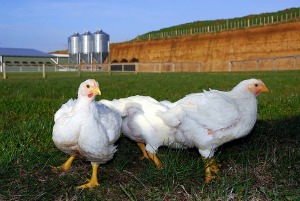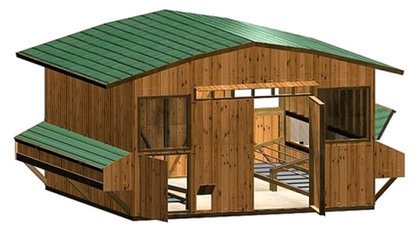It Tastes Like Chicken! Raising Meat Chickens!
Raising meat chickens may be a subject distasteful to some. Many of us consider chickens part of the family and have our favorites. We wouldn’t consider using them for meat.
I raised and kept chickens for more than a decade before I found myself wanting to raise some for meat. I’d raised sheep and rabbits and used some of them for meat for our household, but the thought of having to process chickens seemed more trouble than I wanted.
In recent years I have changed from a person who didn’t see the need for organic foods in my diet, to a person that carefully reads labels and purchases mostly organic foods from the grocery store.
I grow an organic garden in the summer and my laying hens free range feasting on organic vegetation around the farm. The price of organic chicken in the market is high, so raising meat chickens has become a need.
The sad lives of mass produced generic and name brand chickens at the market has convinced me I don’t want to be part of that food chain. I value knowing that the free range organic chickens have been raised with a different level of care and quality of feed.
Free ranging chickens have more of a natural diet, are exposed to sunshine and fresh air, when generic chickens spend their short lives in small cages, over-crowded, breathing fumes from the droppings of thousands of chickens, and may never see the light of day and never benefit from its health giving properties.
If you care about the quality of food you eat you may want to seriously consider or reconsider raising meat chickens.
For more than 8000 years chickens have been providing man with a healthy source of meat. It’s only in recent times that

mass production has developed breeds specially designed to grow fast.
They live in the least amount of space and can produce low priced meat for the least cost to the farmer. Sadly this is a money game and not part of the healthy food industry. Most chicken meat produced in these chicken factories is sold through fast food chains.
The best chickens to raise for meat, and how you raise them will vary. An example: Cornish Cross will reach adult size approximately 6 weeks from hatching. They are not breeders or layers and often become lame if allowed to live much beyond 6 weeks, due to growing massive muscles so quickly.
Raising the number you want, of these meat chickens, from day old chicks, in a healthy environment, with good feed, may be the way you want to go.
Meat breeds come in all sizes, shapes and colors. Dual Purpose breeds have been developed as the perfect farm chicken. The hens are good layers, are willing to go broody and raise chicks.
Female chicks can be kept for future egg laying and the males raised for meat, as has been done for thousands of years with domesticated chickens.
Hatcheries or local breeders often have great deals if you want to buy a lot of male chicks. Do your research ahead of time, so you know which breed or breeds you are most interested in. Finding meat chickens is usually easy, once you know what you’re looking for.
Dark Cornish:
Class: American
Male Mature Weight: up to 8.5 Ibs.
Female Mature Weight: up to 6.5 Ibs.
Egg Color: Brown
The Dark Cornish is a very hearty bird that is native, as the Cornish name depicts, to Cornwall, England. The breed was derived from Old English Game Chickens and the Aseels from India. These guys have thick, compact bodies and broad deep breasts. These super qualities are what makes these birds great chickens to harvest.
Jumbo Cornish Rocks:
These birds have a broad breast, big thighs, and come with white plumage. They are some of the finest harvesting chickens in in the U.S. These birds can be meat ready in six to eight weeks.
Cornish Roaster:
These birds are ideal fryers when butchered young, or as a roaster when fully matured. This bird takes about two more weeks to mature than the Cornish Rock, but still has many of the same qualities. The slower growth actually helps in the development of the bird. They seem to have less leg problems than the Rocks and can reach a dressing weight of 8 or 9 Ibs.
Cornish Game Hens:
These guys are the main ones that you see for sale in the supermarkets. Why not grow them yourself? When you butcher these guys at 2 to 2 1/2 Ibs. live weight you will have some of the best tasting chicken you have ever put in your mouth.
Protection is Key
As you raise chickens one of the first things you come to understand is how important it is to protect them against predators.
I think this is why I often get questions about building chicken coops. I know you see folks bragging online about how their plans are the "best" plans.
But are they really the best? To help simplify matters I've previewed a couple coop plan resources.
Need a quality set of chicken coop plans? Take a good look as I narrow it all down.
Or just click the image below to read my review...

Custom Search




New! Comments
Have your say about what you just read! Leave me a comment in the box below.